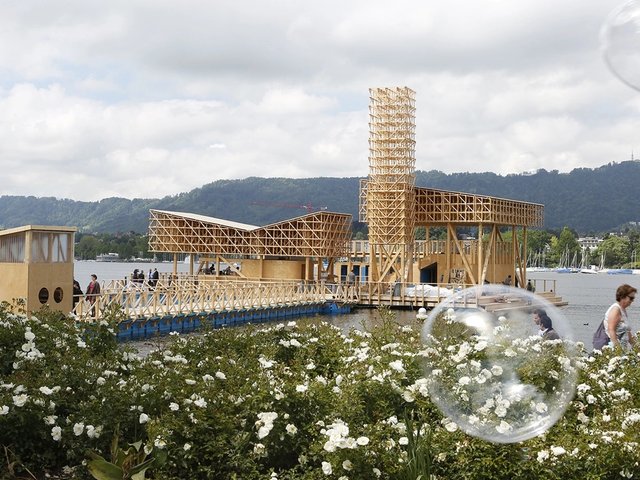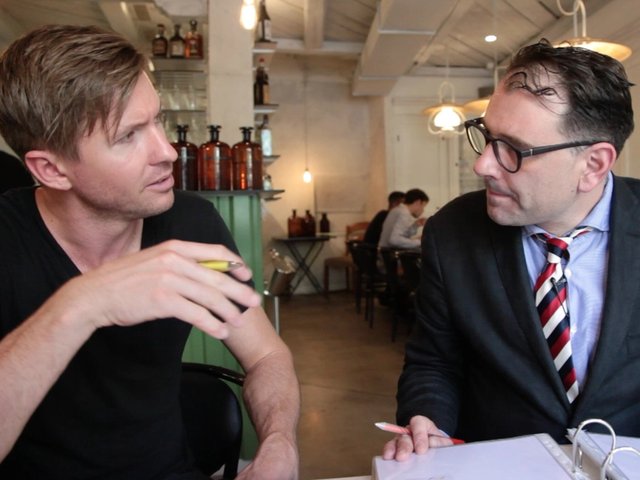As curator of the roving European biennial Manifesta 11, which opened in Zurich, Switzerland, in June, the German artist Christian Jankowski has taken the concept of community outreach work to the extreme. Dentists, doctors, spa managers, boatmakers, dog groomers and transgender escorts are among the various professionals in the affluent Swiss city, located 85km from Basel, who agreed to “host”, or collaborate with, 30 artists for Jankowski’s exhibition What People Do for Money: Some Joint Ventures (until 18 September).
“Emblematic quality” The works co-produced by the international artists and local workers are dotted around “satellite” locations, namely the hosts’ workplaces (the artists chose from a list of 1,000 professions compiled by ETH Zurich University). Hedwig Fijen, the founding director of Manifesta, says that all the works were funded by the Amsterdam-based Manifesta organisation, and will be retained by the artists.
“People in Zurich take great pride in their jobs, and they very much stick to the [professional] plan,” Jankowski says. His initial title for the biennial was Berufungen, which translates as “vocations”, an apposite name for a city built on a Protestant work ethic. “Zurich, a centre for global financial trade, has a certain emblematic quality. What people do for, and with, money makes the city tick,” he says. But some visitors have found it difficult to access some of the satellite venues dotted around the city, which are only open at certain times.

Talking points during the biennial’s opening week included the US artist Mike Bouchet’s sculptural installation, The Zurich Load (2016). Anyone who excreted faeces in the city of Zurich on 24 March contributed to Bouchet’s work made out of human waste. The pungent piece was made in co-operation with the Werdhölzli wastewater treatment plant. A spokeswoman for Manifesta says: “In case no potential buyer emerges, The Zurich Load will be burnt following the usual process in waste management.”
Meanwhile, the artist Pablo Helguera’s “artoons” (or arty cartoons) are drawn on the walls of the Löwenbräukunst culture complex, one of two main Manifesta venues, along with the Helmhaus on the banks of the River Limmat. Helguera’s artoons, which can be enjoyed in The Art Newspaper each month, provide welcome relief with their insights into the more comical aspects of the art market. The artist Jon Rafman has installed an immersive video-art pod at the Float Center Zurich spa, which unsettles rather than relaxes visitors.
Floating platform But everyone has been drawn to the Pavillon of Reflections—the Manifesta hub floating on Lake Zurich, which was constructed by students from ETH Zurich university. There are calls for the platform, where films are screened detailing how the Manifesta works were made, to be a permanent fixture. “The Pavillon of Reflections will hopefully stay for longer than 100 days,” says Bice Curiger, the editor of Parkett and the director of the Fondation Vincent van Gogh, Arles. A Manifesta spokeswoman says that there are no plans to extend the dates.
Three curators on manifesta Francesco Manacorda
Artistic director, Tate Liverpool
I did enjoy some pieces: for example, the lyrical film by Mario Garcia Torres [The Artwork of the Future, An Essay-Opera About Our World’s Anticipations (2016)], along with the complex work of John Kessler [The World Is Cuckoo (Clock) (2016) slide show] and Georgia Sagri [Documentary of Behavioural Currencies (2016)]. Connections between the works and the satellite locations were really intriguing, such as the clinic [Klinik Hirslanden] where Michel Houellebecq had a complete check-up, for example. But I felt that these results were not always reiterated and brought forward in an innovative way within the more specific curatorial narrative.
Bice Curiger
Editor, Parkett, and artistic director, Fondation Vincent van Gogh, Arles
Using the reference point of “the profession” is very smart, as it guarantees an encounter at eye level between the artist and the “professional”. However, the problem might be that sometimes instead of encountering the unexpected, you are entering into an all-too-familiar world: tautology as provocation? I liked The Artwork of the Future by Mario Garcia Torres and the cartoons by Pablo Helguera in the Löwenbräu.
Katerina Gregos
Independent curator and co-curator of Manifesta 9
The biennial concept was clear and coherent. On many occasions, the process of this collaboration was perhaps more interesting than the result. This is why one of the highlights was the series of film screenings on the Pavillon of Reflections, which unfolded the process of collaboration. Mediation was key to the biennial.



